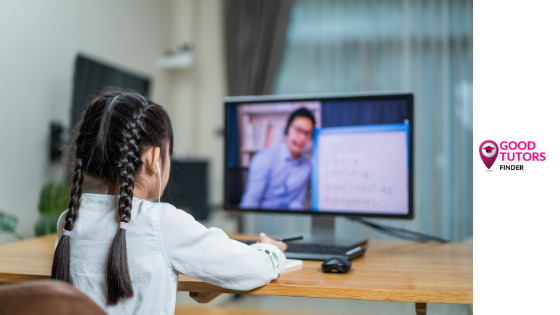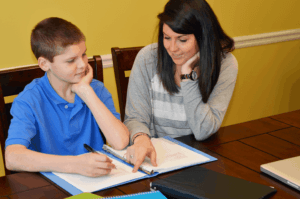How to Optimise Learning During the Pandemic
Often, you may hear about strategies such as expanding the school day to optimise learning. Expanding the school day is one way to optimise learning.
In order to optimise learning during the pandemic, let’s focus on optimising our teaching-learning systems.
We can optimise learning and become more time-efficient by being purposeful in every instructional action.
Let’s look at how we can be more efficient both in the classroom and across all people who support student learning during the pandemic:
1. Engage students as partners in learning
There are two quick wins to think about when focusing on engaging students as partners in learning. The first is simply adding processing questions into lessons. The other is getting students to reflect on their learning during the pandemic in genuine ways that will help them learn.
PROCESSING QUESTIONS
There are simple techniques to integrate processing questions into your lessons. A quick way to start is to add a couple of processing questions into your slides if you are presenting a lecture. Determine ahead of time who you want students to talk to in order to answer the question. This can be a quick turn and talk or a longer collaborative problem-solving activity. You can also set a timer for every seven minutes. When it goes off, have students re-explain to each other what they just learned. Remind them that using their notes, textbook, worksheet, anchor charts, and each other is totally part of the learning. This is not a test. But here’s the key … you can’t skip over these questions because you’re running out of time or because you think the kids don’t need time to talk. They do. Even if they know the answer, they need time to recall it and they need time to ‘own’ the knowledge.
REFLECTING ON LEARNING
When students reflect on and assess their own learning, they learn more deeply and increase their achievement. Student-initiated self-assessment helps raise achievement and doesn’t add “one more thing” to your plate during teaching and learning.
2. Focus on rigorous grade-level, standards-aligned learning
The key to becoming more efficient in the teaching-learning during the pandemic process is to focus on what students will learn and how they will learn it, not what you will teach them. This subtle but necessary distinction helps put the focus on the end result: student outcomes.
If we are focusing on learning, students need to demonstrate the combination of knowledge and skills from multiple standards as those knowledge and skills are used in real life. It’s not enough to teach the skills in combination or make connections to real life. Learning during the pandemic needs to be in combination and demonstrated as we do in real life.
Demonstrating academic knowledge and skills as they are used in real life also includes the skills and roles specific to the subject area – and ultimately, to particular professions.
[Related article: The Most Effective Way to Study]
3. Support the gaps in learning with structures and supports
Teaching is tiring. It can be downright exhausting if the teacher feels they are solely responsible to support the gaps in learning, especially in this time in history where we might have the most varied learning from the last school year.
How can you support students with structures they can use themselves instead of exhaustively running from student to student?
As you plan a lesson, also plan some simple supports to have at the ready.
- Can you put key information on an anchor chart so students can remind themselves of their learning?
- Is there a textbook or worked example that students can consult if they get stuck?
- Are there manipulatives or other supports that could help students think out the process?
The extra 10 minutes it might take you to assemble those supports will save you an endless amount of energy during the lesson itself when you can point to the anchor chart or remind the student to put a sticker on page 45 to look at the example rather than re-explaining the lesson 32 times.
[Related article: How Can We Help Children with Virtual Learning]
4. Tighten the connection between your intervention system and your daily core instruction
One of the hardest parts of an effective intervention system is targeting the needs of each individual student for “just in time” learning and remediation. Often, schools create a six-week or longer intervention plan that is tied to long-cycle formative assessments, such as district-created quarterly assessments or unit tests.
The good thing about long-cycle intervention plans is that they are grounded in data and allow the intervention teacher to make a plan for remediating specific standards.
The struggle with waiting for the long-cycle formative assessment to guide intervention decisions is that students often don’t see the connection between what they are learning in class and what they are practising in interventions because the interventions lag weeks behind core classroom work.
Another struggle is that the student may have gained the targeted skill in core instruction after the long-cycle formative assessment. Now the student still has to sit through a remediation lesson because they need to prove they have mastered this skill before they can be removed from intervention.
Conversely, if we have a system for documenting which daily learning targets a student has achieved, we don’t need to wait for the long-cycle formative assessment. The intervention cycle can be shortened and targeted more efficiently.
[Related article: How to Maintain Strong Academic Performance in the Current Environment]
5. Help tutors align with your core instruction
More schools are using tutors and more administrators are thinking about how to improve communication and alignment between tutoring programs and core instruction.
If we are going to leverage our tutoring systems, we can’t leave identifying the standards and curriculum up to the tutoring organisation.
We also need to help tutoring programs identify the students and the standards that need the most focus using the same data we used to plan interventions. We need to facilitate conversations – ideally around individual students, or if not, then around trends in grade levels.
Reflection questions to help align tutoring and interventions:
- How are you differentiating your tutoring from your intervention in terms of students/standards?
- How will your tutors know where the students’ gaps are?
- How will the tutors document individual student progress?
- How are your interventionist and your tutor communicating with each other and with the classroom teacher?
6. Leverage your relationships with tutors
Progress reports can’t wait until mid-cycle tests such as fall or winter diagnostics. Ongoing communication to the people who support our students outside of school is key.
That communication could mean a reporting program that tutors can access at any time, or it may mean bi-weekly printed updates sent home with the students. Texts and emails can also be helpful – keep the lines of communication going!
Don’t let the communication systems you developed and the tutor relationships you enhanced during the pandemic falter simply because students are back face-to-face. In order for learning to be optimised next school year, we need all adults pulling together.
[Related article: How to make the most of your tutor]
You might also be interested to take a look at our recent blogs for more learning tips and guides.
If you like to provide your child with a trained tutor after school and during holidays who can help with structure and organization, we have just what you need. At Good Tutors Finder, we only have hand-picked tutors who are well versed in these and other strategies and can apply them, whether they are in IB Diploma, IGCSE, AP, or lower grades. Mathematics, Science, Physics, German, French, English, and more, no matter which subject is difficult, our tutors can help out.
Our tutors available everywhere in Germany, including: Munich, Berlin, Cologne, Stuttgart, Hamburg, Frankfurt, and all other cities and also in Austria.
Find out more and book your tutor today!




